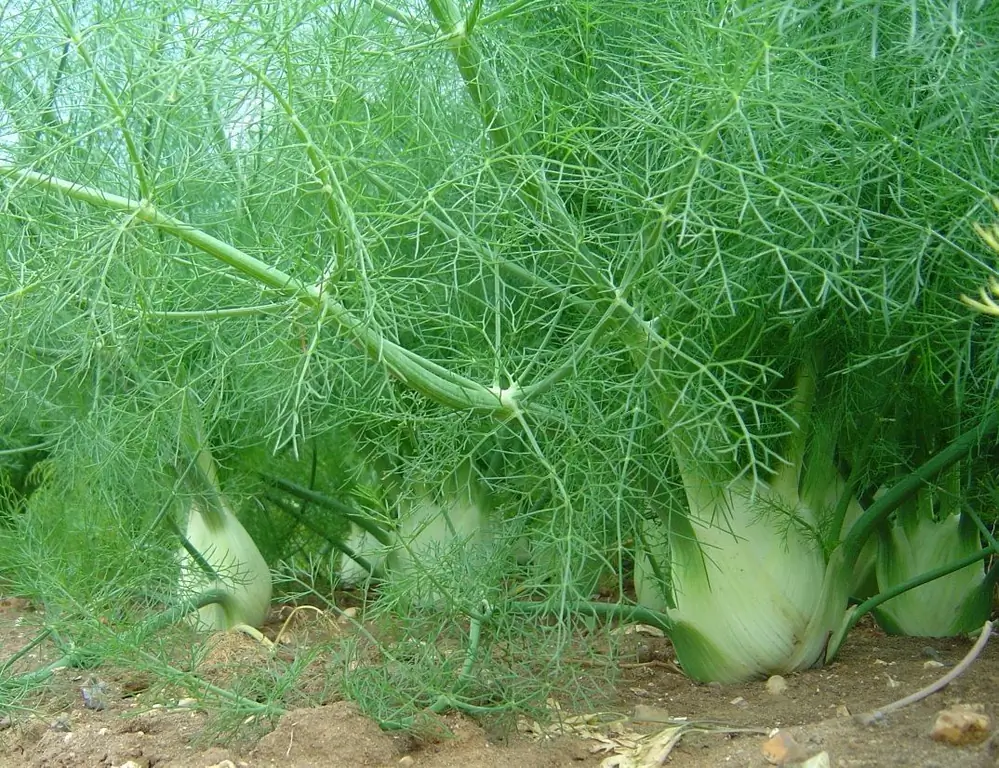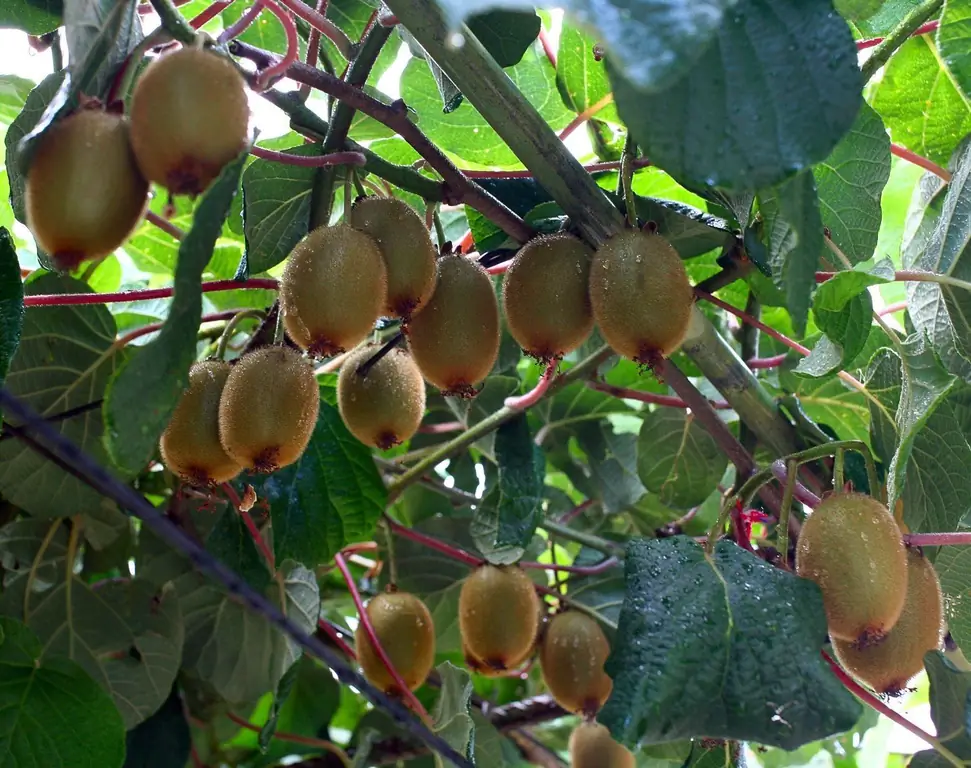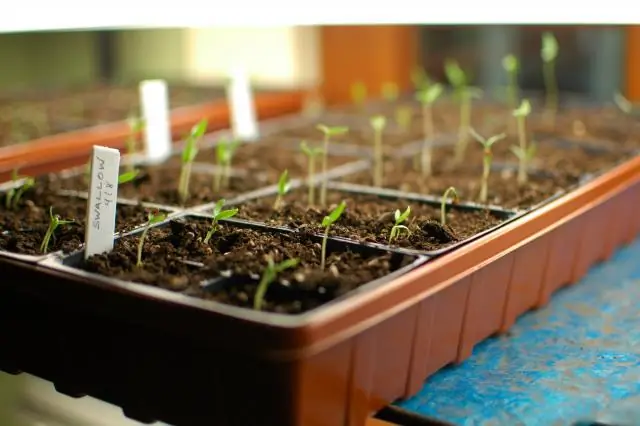
Table of contents:
- Author Bailey Albertson [email protected].
- Public 2023-12-17 12:53.
- Last modified 2025-06-01 07:32.
Dill on the windowsill - a hobby with vitamins

Vitamin greens are at hand - always convenient, especially in winter. And in the summer, landless lovers of digging in the beds arrange them on balconies or window sills. Perhaps, most often, various salads and dill are sown in boxes.
Content
-
1 What you need to grow dill at home
- 1.1 Air temperature
- 1.2 Humidity
- 1.3 Lighting conditions
- 1.4 What else is needed
- 2 Variety selection
- 3 Preparation and sowing of dill seeds
-
4 Caring for dill on the windowsill and balcony
4.1 Video: dill on the windowsill
What you need to grow dill at home
Do not think that dill, which often grows in the garden almost like a weed, will not cause much trouble in a city apartment. To grow it, you will need to take care of several important parameters.
Air temperature
In the first week after germination, the dill will need to be kept cool, and the rest of the time - at a temperature close to room temperature. However, if the temperature significantly exceeds 20 ° C, additional difficulties arise in the care associated with the possibility of strong stretching of the plants. If you do not provide very bright lighting, you can get thin long stems and nondescript pale leaves.
Humidity
In summer, there are usually no problems with air humidity in apartments, but in winter heating radiators dry out the air greatly, creating unbearable conditions for dill. Therefore, you need to be prepared for the fact that you will have to systematically humidify the air from a spray bottle or using a special humidifier; you can, of course, just place jars of water around the dill. As for soil moisture, this is easier: you only need to water the plants often.
Lighting conditions
Dill is a very light-loving culture. It will have to be grown on the most lighted windowsill, and in winter it is imperative to equip special lighting with diode lamps or fluorescent lamps. If the daylight hours lasts less than 12 hours, you don't even need to get involved with growing dill. 15 hours of bright light is good.
What else is required
If the above does not frighten the city dweller, you can prepare:
- suitable boxes of any size (height from 8-10 cm),
- buy seeds,
- priming,
- fertilizer,
- spray.
It also takes a little patience and time every day.
Variety selection
It is better not to sow the first seeds that come across, but, unfortunately, there are no special varieties of dill for growing in the room. In summer, conditions on the balcony are almost the same as in the garden, any variety is suitable, and for winter cultivation it is worth thinking about the ripening time: after all, dill can also be early, mid and late ripening.
Early ripening varieties (Gribovsky, Grenadier, Karusel, etc.) sprout faster than others, but they bloom early, not having time to form a lot of greenery. Late ripening ones (Russian, Gigant, Alligator, Buyan, etc.) are slow-witted, but they have a high yield. Mid-ripening ones (Kibray, Umbrella, Pakhuchiy, etc.) occupy an intermediate position.
All novice gardeners are advised to try their hand at the early, long-known variety Gribovsky. It may not be the most fruitful, but one of the most unpretentious, is not afraid of temperature changes, almost never gets sick. Experienced people switch to high-yielding varieties, but they usually take some serious tinkering with. They also grow the latest varieties, even those that do not have time to properly realize their potential in the garden. These are, for example, Gourmet, Salute, Russian size, forming densely leafy, green bushes for a long time.

Gribovsky is suitable for growing at home
Preparing and sowing dill seeds
Dill is a relatively unpretentious crop from the point of view of soil, but this applies to natural conditions. For home cultivation, you need to pick up a highly fertile soil. The soil must be placed in a box and the prepared seeds must be sown there. For an experienced gardener, all operations are simple and are as follows.
-
They buy ready-made universal soil in the store or prepare it themselves. In equal parts, mix garden soil, peat and humus. The soil should be breathable and lightweight. If the components are of suspicious origin, the soil is disinfected: spill with a pink solution of potassium permanganate.

Ready soil For dill, it is better to take a universal soil
-
A suitable box or pot is washed well, a drainage layer is placed on the bottom (2-3 cm of small pebbles, expanded clay or coarse sand), then the prepared soil is poured with a layer of 10 to 20 cm, lightly tamped.

Box The box can be of any size based on the size of the window sill
-
Seeds are prepared for sowing. After filling them with water, after a while they throw out those that did not drown. The rest are poured for a couple of hours with a light pink solution of potassium permanganate. Then they keep them in clean water for two days, changing it every few hours: this is necessary to awaken the seeds, remove the dense etheric shell from their surface. To make sowing easier, the seeds are dried to a state of flowability.

Germinated seeds Sometimes the seeds are even germinated, but then they will be harder to sow.
-
Using a spray bottle, the soil surface is well moistened. Spread the seeds. It is difficult to spread them out by the piece, but they try to sow not very thickly. Once again moisten a little and sprinkle with a layer of soil of 1-1.5 cm.

Sowing seeds Rows can also be organized, but usually the seeds are sown "as needed"
-
Cover the container with the crops with glass or foil and put it in a warm place (normal room temperature is enough). Periodically raise the glass so that condensation does not accumulate, when the surface dries, lightly spray it.

Box under glass You can do without glass, but then every day you need to spray the soil
Immediately after germination (it may take 7 to 12 days), it is necessary to rearrange the drawer for a week in a well-lit area with a temperature of about 10 to C, remove the glass and when the seedlings just grow up, to thin them so that was about 3 cm between them …
Dill care on the windowsill and balcony
If dill is grown on a balcony, from spring to autumn, then caring for it is very simple and almost does not differ from that in garden beds. It is periodically watered, fed a couple of times, loosened the soil. As a rule, additional lighting on the balcony is not required, do not have to worry about the temperature control: as long as it will not fall below 8 on C, dill will grow normally. True, if the balcony is glazed, in the summer it is necessary to protect the plantings from overheating: ventilate and water more often.

In summer, the greenery on the balcony receives enough light and warmth
In an apartment, especially in winter, everything is somewhat more complicated.
Dill requires systematic watering, and throughout the entire period, from the emergence of seedlings to the cutting of the last harvest. While the sprouts are very small, it is better to use a spray bottle, then any watering can or even a ladle will do. Water is used at room temperature. Watering frequency depends on conditions; you may need to water a little every day. Water should not stagnate in the box, but the soil should not dry out either.

Dill on the window needs good watering
Top dressing is applied 1-2 times a month. Many gardeners have a prejudice about mineral fertilizers, but it is not worth advising to plant organic matter at home. Actually, if there is no desire to use conventional complex fertilizers like azofoska, you can pick up special formulations based on organic components in the store: Bioactive, Organic-balance, etc.
It is important to properly organize the lighting of dill in the apartment so that the light is intense and sufficient in duration. The hotter it is in the room, the more dill needs light. The lamps are suspended about 50 cm above the leaves. As a rule, they are turned on for several hours in the morning and in the evening, so that daylight hours last from 12 to 15 hours. In addition, it is worth turning the boxes in different directions to the sun every day to make the lighting more even.

For supplementary lighting of dill, you can buy a phyto-bulb with a regular base and screw it into a table lamp or a clothespin lamp
Cutting the leaves is carried out with scissors as needed, but it is better not to start this earlier than the dill grows to 15-20 cm. After the mass cutting, the dill must be watered and sprayed well.
Video: dill on the windowsill
Growing dill at home is both a hobby and a benefit. The activity is exciting, not very difficult, but it requires a daily investment of time.
Recommended:
Growing Fennel From Seeds (including Vegetable Seeds) At Home And In The Garden + Photo And Video

Practical tips for growing fennel from seed. Fennel species, varieties suitable for growing in the middle lane
How To Grow Plumeria From Seeds At Home: Step-by-step Instructions With Photos And Videos, Further Care Of The Plant

Growing plumeria seeds at home. Germination and planting tips. Required care: watering, fertilizing, etc. Pests and the fight against them
How To Grow Kiwi (at Home From Seeds, Seeds, Etc.) + Video And Photos

Step by step instructions for growing kiwi at home. Growing from seeds and seeds, taking care of seedlings and plants during the growth period
Growing Eustoma From Seeds At Home: Step-by-step Instructions With Photos And Videos + Reviews

Distinctive features of eustoma, common varieties. Rules for growing from seeds and other parts, a step-by-step description of the process
How To Grow Cyclamen From Seeds At Home: Step By Step Instructions With Photos And Videos

How to grow cyclamen at home: choosing materials and soil, preparing seeds and caring for seedlings. Step by step instructions for growing. Video
